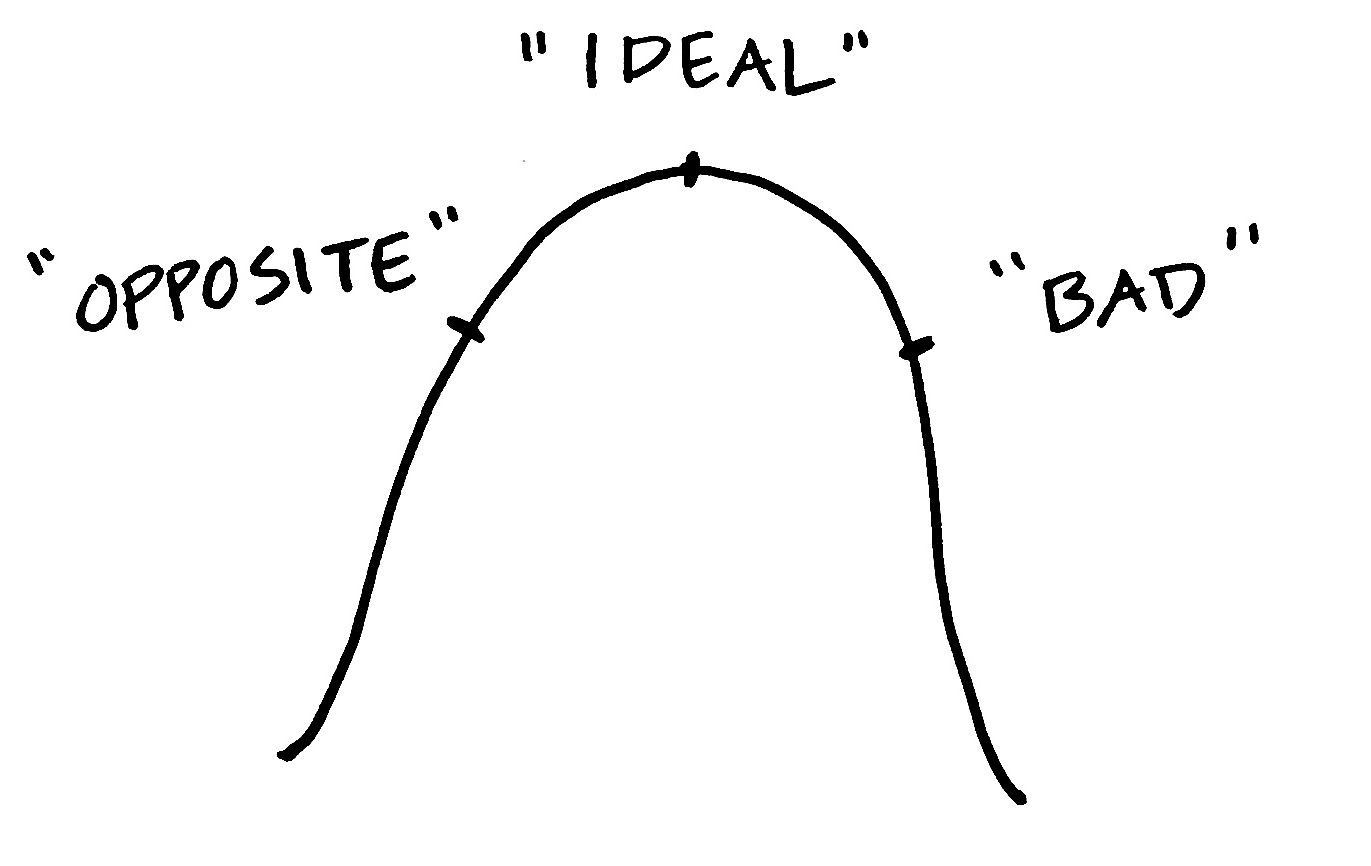Lately I’ve been noticing a fascinating pattern that I’ve finally been able to put a name to. I’ve seen it in almost every client, and I’ve certainly seen it in myself and people who are close to me.
Here's what happens: When we have a very bad experience with someone, especially in the formative period of early adulthood (think terrible first boss, a mentor gone wrong, etc.), we often develop values and behaviors that are the exact opposite of those we associate with the traumatic or repulsive experience.
This probably sounds sensible at first glance. But there is a shadow side to this behavior, and it can greatly hinder how we show up as founders.
After seeing this pattern repeatedly in my client work, I decided to research the psychological underpinnings and discovered this phenomenon has a name: reaction formation. Before I found the name for it, I was calling it “compensatory behavior.”
The name doesn’t really matter—I just want to share with you what I’ve learned about this pattern, because the odds are almost certain that you are dealing with it yourself.
The bell curve model: a visual framework
When working with clients, I've found it helpful to visualize this phenomenon as a bell curve:
At the top of the curve is your authentic, integrated self—the ideal version of you who can effortlessly operate according to your own values, for the good of you and those around you.
On one side of the curve is the behavior, values, or personality of whoever traumatized or repulsed you.
On the opposite side is where many of us unconsciously position ourselves—adopting behaviors, values, and traits that are completely contrary to the traumatic model.
Here's the tricky part: While the opposite side of the curve may feel like "the right way to be," both extremes are deviations from your ideal. And the opposite often contains its own slew of self-sabotaging behaviors.
How this plays out with founders
I've noticed that this pattern takes some specific forms in startup culture. The traumatic experiences that shape founders' reactions often include:
Witnessing the corrosive effects of wealth or power on formerly ethical people
Experiencing toxic leadership in early career roles
Suffering through failure in high-stakes environments
Shouldering the weight of impossible expectations
The reaction formations that emerge from these experiences are equally distinctive:
The Success Avoider: Founders who deliberately reject growth opportunities to avoid becoming "too big" (often after witnessing how wealth or power corrupted someone they admired)
The Martyr: Leaders who over-give and sacrifice all work-life boundaries to avoid resembling toxic, self-centered bosses from their past
The Risk Absolutist: Entrepreneurs who swing between extreme caution and reckless risk-taking, without finding the strategic middle ground
The Self-Deprecator: People who minimize their achievements and competence out of guilt, to avoid resembling arrogant figures from their past
Here, things are out of balance.
Case studies
To bring this to life, let me share a few anonymized examples from my client work:
Case 1: The Opportunity Avoider
A talented Silicon Valley founder had a pattern of turning down potentially massive opportunities (including early-stage roles at several now-unicorn companies). While they initially explained these choices through “not wanting to be a part of that culture,” deeper exploration revealed a fear that too much success would destroy their life, just as they had seen happen to a mentor figure whose mental health deteriorated as their success and wealth grew, ultimately resulting in suicide.
Their reaction formation led them to deliberately limit their own material success as a protective measure. Without them realizing it, this belief system was creating limitations in how they grew their current company.
Case 2: The Self-Sacrificing Leader
A consumer goods CEO worked punishing hours while feeling guilty about taking any time for personal interests or self-care. We eventually traced this pattern back to a formative relationship with a narcissistic boss who exploited employees while indulging himself. The CEO had unconsciously positioned themselves at the opposite extreme, believing that any self-prioritization would make them "selfish" like their former boss.
This reaction formation created a caring leadership style paired with self-neglect, ultimately leading to burnout and diminished effectiveness.
Case 3: The Paralyzed Perfectionist
A first-time startup founder found themselves stuck in analysis-paralysis, unable to make decisive moves with their startup. Exploration revealed they were caught between two opposing forces—the high-pressure, achievement-oriented environment of their upbringing versus a rebellious impulse to reject all structure and expectation.
Neither extreme represented their authentic self or a balanced leadership style, but the tension between these poles left them constantly frozen in indecision.
How to recognize this pattern in yourself
This pattern operates largely beneath our conscious awareness, which makes it challenging to identify. Here are some signs that you might be caught in reaction formation:
Strong negative reactions to certain personality types or behaviors (often disproportionate to the actual situation)
Rigid adherence to particular values or behaviors, with little flexibility
Identity statements focused on what you're not: "I'm not the kind of person who..."
All-or-nothing thinking about certain traits or behaviors
Excessive pride in being different from a particular person or group
Fear of resembling someone who hurt you
Over-identification with being the "opposite" of a negative figure in your life
If you notice these patterns, it doesn't mean your values are wrong. It simply suggests that your expression of those values might be reactively formed rather than authentically chosen.
Fortunately, there are ways to express your values that don’t come with so much unconscious baggage.
Keep reading with a 7-day free trial
Subscribe to Founder Things. to keep reading this post and get 7 days of free access to the full post archives.




